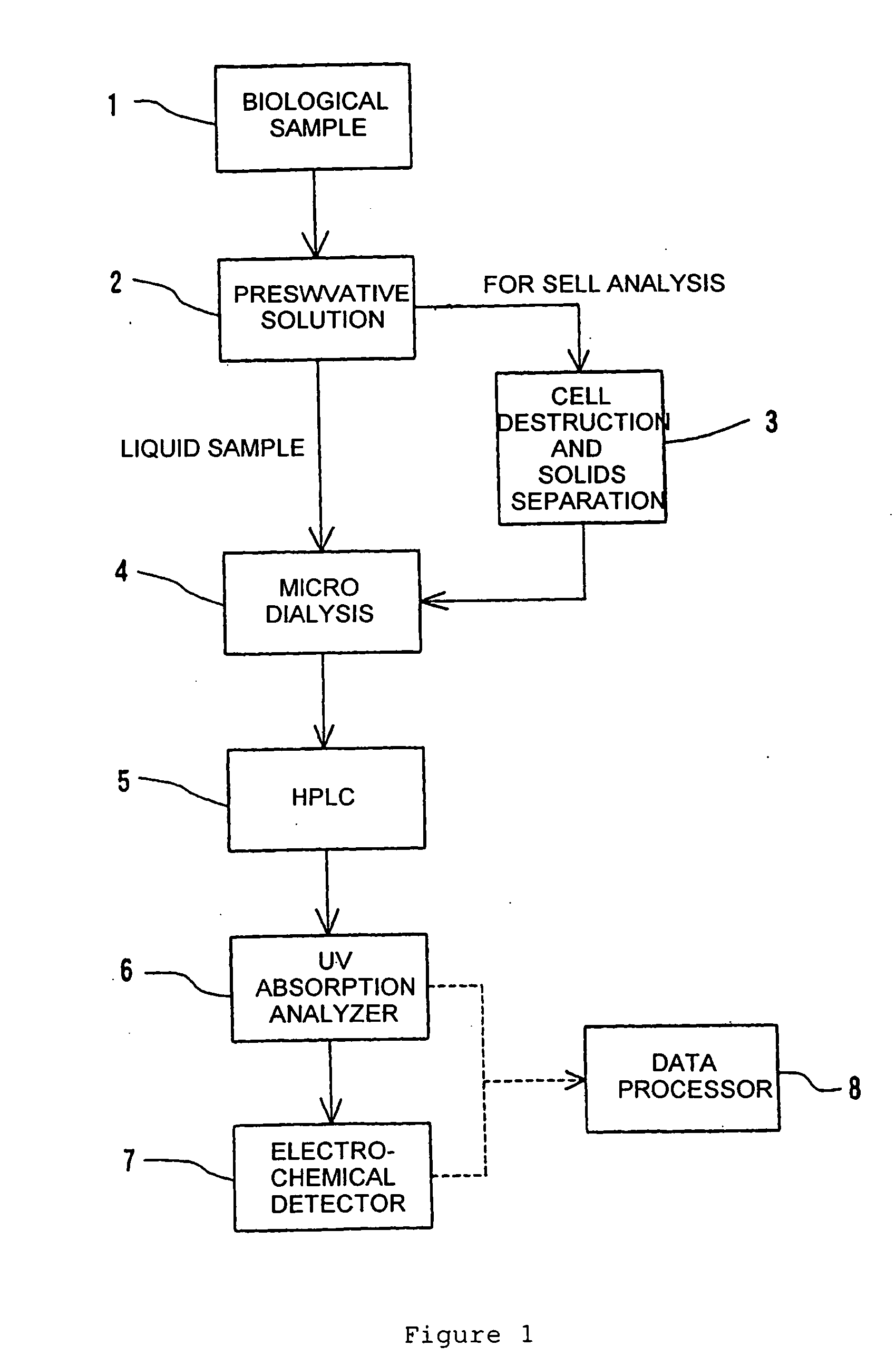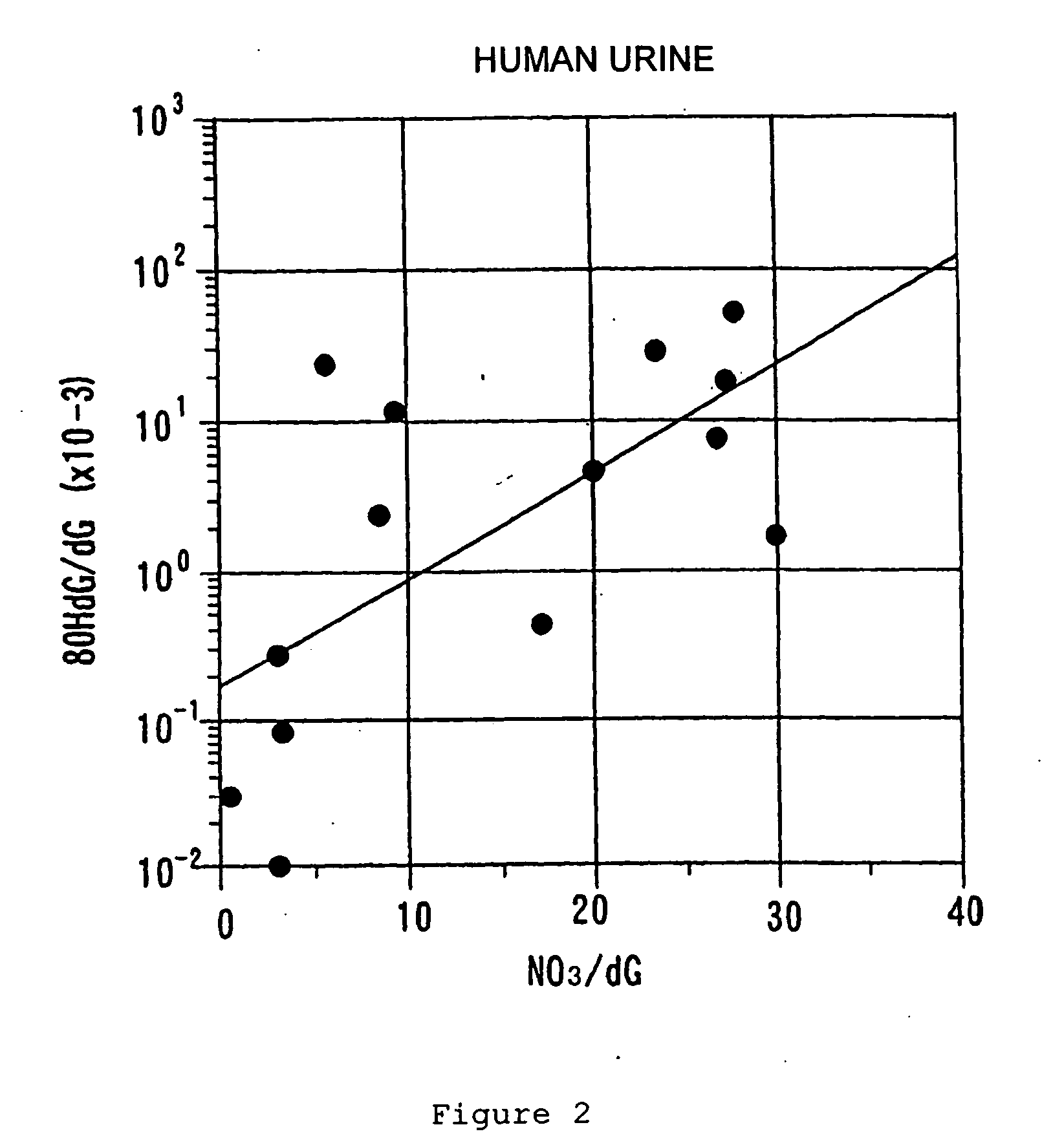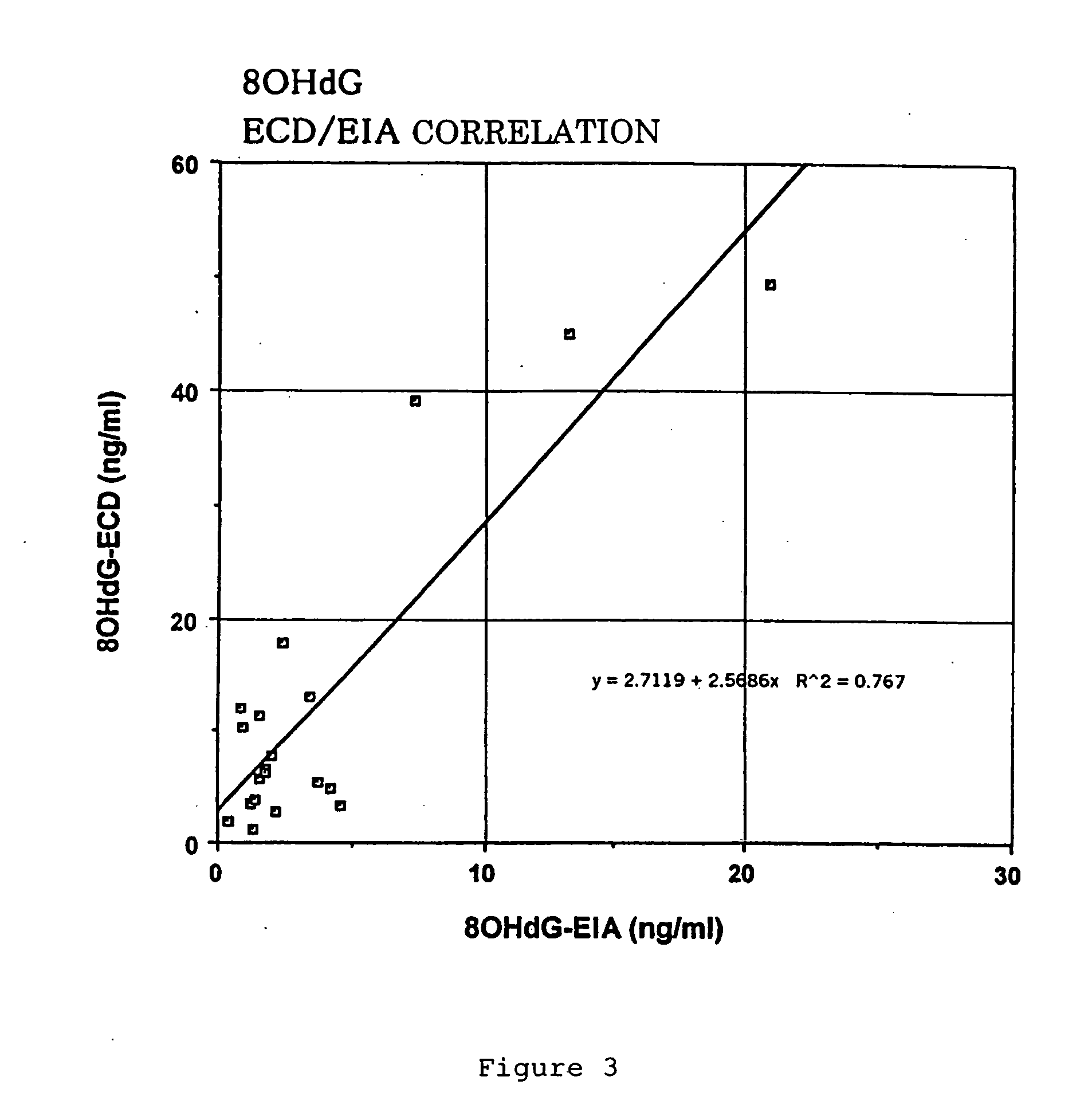Simplified biological evaluation method of natural and artificial chemicals by using DNA injury index and apparatus therefor
a biological evaluation method and injury index technology, applied in the field of simplified biological evaluation methods of natural and artificial chemicals by using dna injury index, can solve the problems of various components synergistically acting to become toxic, and affecting the biological toxicity of natural materials
- Summary
- Abstract
- Description
- Claims
- Application Information
AI Technical Summary
Benefits of technology
Problems solved by technology
Method used
Image
Examples
example 1
[0092] Solutions in various concentrations (0.0005 ppm, 0.005 ppm, 0.05 ppm, 0.5 ppm and 5 ppm) of pentachlorophenol (PCP, herbicide), bisphenol A (BPA, resin raw material), and Resveratol (RVT, one kind of polyphenol) were prepared and 180 μl portions were injected into each well of two 99-well plastic plates. Then, 20 μl of 200 μg / ml dG (dissolved in ultrapure water) was added to each well and one of the plates was left to stand as it was at room temperature for 90 minutes and the other plate was irradiated with UV light (254 nm, 860 μW / cm2) for 90 minutes in a UV light irradiation box. After completion of the standing or irradiation, the solution in each well was mixed with the same amount of 20% glycerol solution and dG and 8OHdG were separated from each other by use of HPLC [column used: CA-50DS (manufactured by AICOM CO.), mobile phase solution: 0.1 M phosphate buffer; 3 to 10% methanol, SOS 90 to 100 mg]. Subsequently, nucleosides in the both were quantified by use of the UV ...
example 2
[0111] Solutions of predetermined concentrations of vitamin C (VC), vitamin E (VE), catechin (Cate) and tannic acid (Tan) were prepared and 180 μl portions were injected into each well of two 99-well plastic plates. Then, 20 μl of 200 μg / ml dG (dissolved in ultrapure water) was added to each well and one of the plates was left to stand as it was at room temperature for 90 minutes and the other plate was irradiated with UV light (254 nm, 860 μW / cm2) for 90 minutes in a UV light irradiation box. After completion of the standing or irradiation, the solution in each well was mixed with the same amount of 20% glycerol solution and dG and 8OHdG were quantified in the same manner as in Example 1. For comparison, measurement of dG and 8OHdG was performed on distilled water alone that had been treated in the same manner. The results are shown in Table 2.
TABLE 290 Minutes'90 Minutes' UVTest SubstanceConcentrationstandingirradiationdistilled water0.151.23VC 0.001%6.0438.36 0.0001%0.631.510.0...
example 3
[0117] Solutions of predetermined concentrations of glycerol (Gly) and methanol (Meth) were prepared and 180 μl portions thereof were injected into each well of five 99-well plastic plates. Then, 20 μl of 200 μg / ml dG (dissolved in ultrapure water) was added to each well and one of the plates was left to stand as it was at room temperature for 90 minutes and another plate was left to stand similarly at room temperature for 24 hours. The remaining three plates were irradiated with UV light (254 nm, 860 μW / cm2) for 60 minutes, 90 minutes and 120 minutes, respectively, in a UV light irradiation box. After completion of the standing or irradiation, the solution in each well was mixed with the same amount of 20% glycerol solution and dG and 8OHdG were quantified in the same manner as in Example 1. For comparison, measurement of dG and 8OHdG was performed on ultrapure water alone that had been treated in the same manner. The results are shown in Table 3.
TABLE 3StandingUV irradiationTest...
PUM
| Property | Measurement | Unit |
|---|---|---|
| Molar density | aaaaa | aaaaa |
| Fraction | aaaaa | aaaaa |
| Fraction | aaaaa | aaaaa |
Abstract
Description
Claims
Application Information
 Login to View More
Login to View More - R&D
- Intellectual Property
- Life Sciences
- Materials
- Tech Scout
- Unparalleled Data Quality
- Higher Quality Content
- 60% Fewer Hallucinations
Browse by: Latest US Patents, China's latest patents, Technical Efficacy Thesaurus, Application Domain, Technology Topic, Popular Technical Reports.
© 2025 PatSnap. All rights reserved.Legal|Privacy policy|Modern Slavery Act Transparency Statement|Sitemap|About US| Contact US: help@patsnap.com



